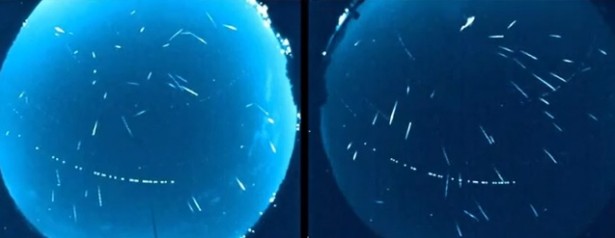
Word on the street: If you see no other meteor shower this year, make it this one. Tonight, August 11, through the 13th, the Perseids will light up the sky, joining our old friends Venus, Jupiter and the moon as the three align.
“We expect to see meteor rates as high as a hundred per hour,” said Bill Cooke of NASA’s Meteoroid Environment Office in a release. “The Perseids always put on a good show.”
Every year the Perseids sprinkle their baubly lights upon the heavens, creating a show for observers on Mother Earth. They result from Mother Earth’s annual passage through the debris stream from Comet Swift-Tuttle, NASA said, discovered in 1862, according to Starry Night Education on Space.com.
They seem to emanate from the constellation known these days as Perseus, and the most rewarding spot to ogle, according to Space.com, will be by looking southeast. The shower can be viewed from 10 p.m. on, from anywhere, but the show will be best seen away from city lights, at the darkest hours before dawn, the experts say. People in rural areas will see triple the number of shooting stars as the urbanites among us.
Making the Perseids especially delightful this year is the celestial show that accompanies them: yet more shenanigans between Jupiter, the moon and Venus.
Early on August 11 the crescent moon brushed by Jupiter as both gazed down upon blazing Venus. This part of the show continues on August 12, NASA said, with a 24 percent crescent moon slipping between Jupiter and Venus, making a bright three-point line that the Perseids will shoot through.
The shower will peak between midnight and 9 a.m. Eastern Daylight Time on Sunday August 12, according to Space.com. But the show will be far from over. As the shower starts to fade on August 13, the planets will brighten, with the moon down to 17 percent and passing right by Venus, with Jupiter observing from above, the Perseids shooting past them.
Below is NASA’s description of the fun.